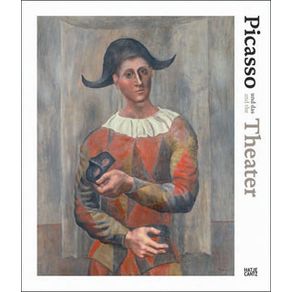Forty years ago, the first time anyone thought to consider Picasso's theatrical work as a unified portfolio, Jean Cassou, then the Director of the Musee d'Arte Moderne in Paris, observed that the work occupied a great place in his career. His wholegenius, his entire work, including his still lifes, have a theatrical character. In his early years, Picasso discovered the theater as a source of inspiration and motifs. His subjects frequently came from carnivals and vaudeville, and he reveled intheconventions of commedia dell'arte figures such as the Harlequin and Pierrot. This fascination was not only reflected in the motifs of Picasso's countless paintings and drawings: Beginning in 1917, he began working intensively with Diaghilev's Ballets Russes, creating his now-famous sets and costumes for the troupe. For Picasso, the stage proved to be an extraordinarily fertile ground, and performance the subject of ever more paintings and sculptures. Picasso and the Theatre features over 80works dating between 1900 and 1930, and taps an elemental passion of this universally revered artist.



